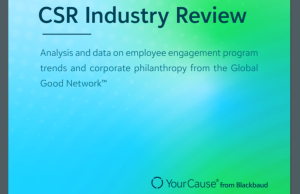A majority of nonprofits across all subsectors expect fundraising will decline through the remainder of 2020, according to a new survey, but few respondents have laid off or furloughed fundraising staff.
The 12-page report, “Fundraising Impact of COVID-19,” from CCS Fundraising includes responses from 1,183 nonprofits between April 20 and May 1.
Some 63 percent of responding nonprofits cite a decline in fundraising since the start of the pandemic and 25 percent report a “significant” fundraising decline. Religious and cultural organizations are among those particularly hard hit. The nearly 15 percent of respondents that noted increases were primarily hospitals, health and human service organizations.
Almost four out of five organizations expect a decline in fundraising for the rest of 2020, with half of those expecting a “significant” decline. Barely one in 10 expect to see an increase.
Despite economic hardships, three-quarters of survey respondents indicated they had not laid off or furloughed fundraising staff to date. Nine percent said they made “modest” reductions, another 6 percent reported “significant” reductions made, while 10 percent said such measures were under consideration. The cultural and performing arts sectors are the hardest hit, with the health, education, and human services sectors citing the least amount of fundraising staff reductions.
There’s a likelihood that those employees would be either repurposed or laid off in parts of the fundraising department, like special events and other very “front-facing things,” said Bob Kissane, chairman of CCS Fundraising. “We’re seeing a lot of repurposing of fundraising staff,” he said.
Repurposing of staff has become very effective and even has highlighted new skill sets of employees, Kissane said. In New York, some of the big medical centers have administrative personnel in direct stewardship and donor engagement, he said. At Alvin Ailey American Dance Theater, where Kissane serves on the board, the social media team has been amplified by dancers who are very adept at social media. “There’s just so much more absorption of Ailey content and the social media side of it has picked up,” Kissane said, noting some 13 million views for various streaming performances.
Most nonprofits still plan to continue with pre-existing campaign plans despite the pandemic, with “appropriate modifications.” Only nine respondents, or less 1 percent, noted campaign cancellations. Almost two-thirds of organizations have continued to make appeals at the same or greater rate as before. More than a quarter of respondents have expanded appeals while an equal percentage eliminated or contracted them. Nonprofits with the largest operating budgets were most likely to have expanded fundraising appeals.
Major donor strategies with direct appeals are a higher priority during this time, with a continued focus on general appeals to all stakeholders reported as the only priority strategy cited more often. Current donors and stakeholders are the primary supporters cited by more than 68 percent of respondents.
Slightly more than half of those responding have launched special appeals in response to COVID-19, with hospitals, healthcare, and human service organizations representing sectors reporting the highest percentage of respondents that have launched emergency funds or special appeals in response to COVID-19. The majority of higher education institutions have also launched such appeals.
Nonprofits are adjusting or expanding their case for support to include new COVID-related programs as well as an enhanced focus on current programs. The sectors reporting the greatest adjustments to their case for support are education, healthcare, and human services organizations.
The pandemic has been an “accelerant” for some organizations to get into new operating methods, such as those that were not in the social media or digital space. It’s forced some organizations to set up and live in a more digital world, Kissane said.
Some major, general hospitals didn’t have an easy way to click a button to make a donation. “Focusing on cancer or children is different in messaging than focusing on every single illness in the world,” Kissane said. “A lot of places are not that strong in just giving over the web that way. Now they have had to pivot overnight and change,” he said. Many parishes in the Diocese of Brooklyn didn’t have a digital presence and are now streaming masses online, Kissane said.











